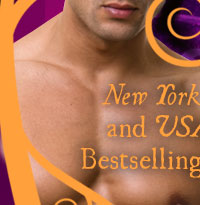I promised I’d post some things I’ve learned along the way about writing for aspiring writers. Here’s my take on POV.
I own a gazillion books about the craft of writing. Every once in a while, I’ll run my fingers over the spines and say a little incantation hoping the knowledge will seep into me by osmosis, because I haven’t read them!
So, everything I’m saying here is strictly “POV according to Delilah.” This is all I know—what I’ve picked up from listening to other writers complaining about someone else’s poor use of POV. We writers love to tear each other to shreds, don’t we? In a constructive way!
What is my impression of Point of View?
Down and dirty—it’s whose head you’re in, whose body you’re crawling around inside to describe what that character is seeing, feeling, touching, tasting.
Let’s start with the terms I learned first in high school English. This is the easy part to distinguish.
1) First Person: If you are writing a book and you have a single POV and constantly refer to him or her as “I”, you’re using first person POV.
2) Third Person: This is more commonly used in romance fiction. If you want to see inside more than one person’s head, you really need to be using third. Here you are referring to your hero and heroine as “he” and “she”.
3) Omniscient: This is trickier. You’re using “he” and “she”, but you aren’t in any one character’s head. You might be seeing something your characters can’t see. Use this sparingly, if at all. It’s a disembodied voice, not rooted in the emotions and insights of any character.
Knowing how to recognize POV is one thing. Using it well is an art.
I write mostly in third person. I write romance and love to see inside both character’s heads to know how the romance is progressing according to their separate POVs.
How do I decide whose head I want to be in?
I evaluate what I want to accomplish in a particular scene. What lesson will be learned? Who has the most to lose from the outcome of the scene? Whoever will give me the most emotional impact is who I go with.
How do I know I’m using POV well?
I pretend I’m using binoculars when I enter a scene. Once I’ve chosen the head I want to walk around in, I look at the scene through his or her eyes. What is she feeling? What is she seeing? She can’t see an emotion occurring in the hero, but she can read his facial expressions or his body language to surmise what’s happening inside him.
Take a look at this sentence and see if you get it:
“Sarah glanced at Luke. He looked embarrassed.“
Sarah can’t see embarrassment—but she can see red cheeks, a gaze that can’t quite meet hers—and guess what’s going in inside Luke. Be sure to “show, not tell”.
How often should I change POV? What’s head hopping?
When writing shorter romances (series, novellas), you will likely only use two POVs—the hero’s and the heroine’s. You won’t have the page count for other character’s POV and subplots.
Before I start writing, I decide whose book this is. Sure, I have a hero and a heroine, and they both are falling in love, but one character has more to learn, more to sacrifice. That’s the person who owns that story. I will spend more time inside her or his head. I try to balance the POVs scene by scene the best I can, but my main character needs more pages.
If my hero chooses to hurt my heroine to keep her away from him for her safety, I’ll be in his head. He’s fighting his emotions to give her the stoney-faced set down to drive her away. There’s more happening inside him, than her. In the next scene, I will want to know what she thinks and feels about what just happened. UNLESS, I want his motivations hidden—in which case, we will see the set down occur in her POV.
You no doubt have heard the term “head-hopping.” The simple explanation is that you swap POVs. Some purists think you should only have a single POV per chapter or scene. I go with that advice, most of the time. If I do decide to leap to the other person’s head mid-scene, I do it cleanly and I don’t go back. Changing POV mid-scene can very effective in love scene or a scene with a lot of action.
Don’t give your animals a POV unless they’re sentient aliens who think like us—I can’t think of any time I’ve seen that used effectively. Do you know what an animal thinks? I blur that rule only when I write my shape shifters, because even in animal form they retain some spark of human sentience.
If you’re a writer and have your own thoughts on how to identify whose head you should be in or how to deepen POV, I’d love the hear your thoughts. ~DD


















